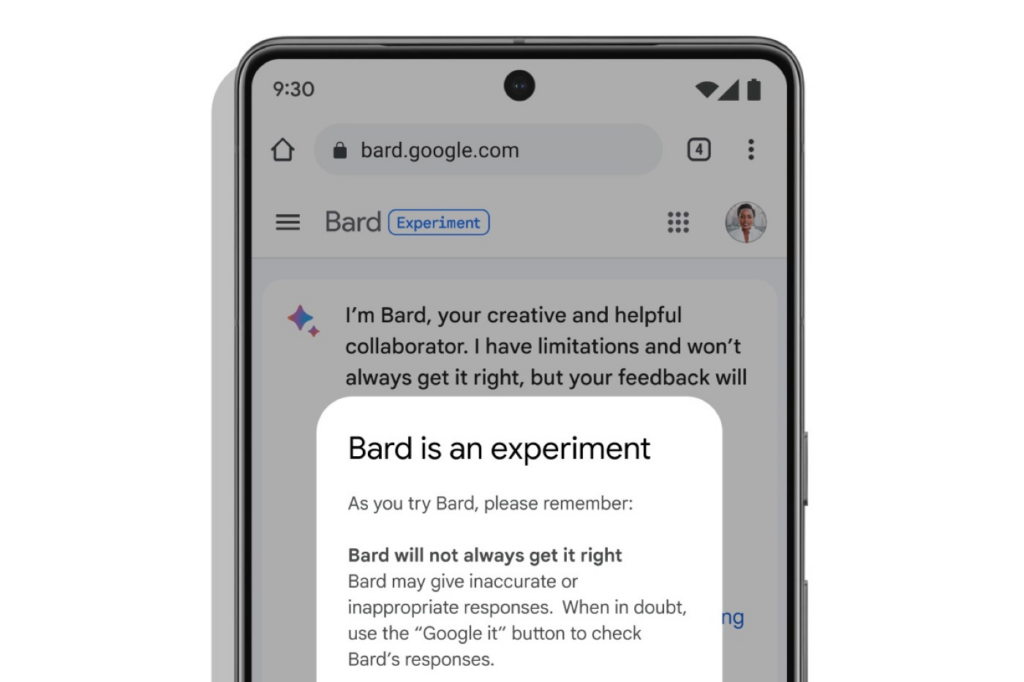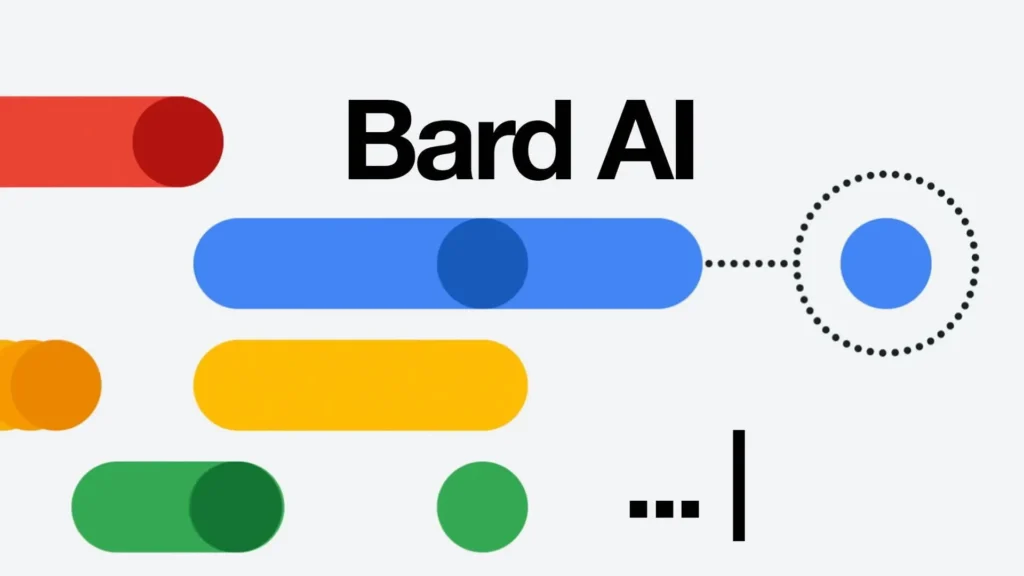Google Bard AI Expands to 180 Countries and Territories, Unveils New Features
Google Bard Drops Waitlist : For the past two months, anyone wanting to try out Google’s new chatbot AI, Bard, had to first register their interest and join a waitlist before being granted access. On Wednesday, the company announced that those days are over. Bard will immediately be dropping the waitlist requirement as it expands to 180 additional countries and territories.

Bard Built on New PaLM 2 Language Model
What’s more, this expanded Bard will be built atop Google’s newest Large Language Model, PaLM 2, making it more capable than ever before.
Google hurriedly released the first generation Bard back in February after OpenAI’s ChatGPT came out of nowhere and began eating the industry’s collective lunch like Gulliver in a Lilliputian cafeteria. Matters were made worse when Bard’s initial performances proved less than impressive — especially given Google’s generally accepted status at the forefront of AI development — which hurt both Google’s public image and its bottom line.

In the intervening months, the company has worked to further develop PaLM, the language model that essentially powers Bard, allowing it to produce better quality and higher-fidelity responses, as well as perform new tasks like generating programming code.
New Features and Functions
As Google executives announced at the company’s I/O 2023 keynote on Wednesday, Bard has been switched over to the new PaLM 2 platform. As such, users can expect a bevy of new features and functions to roll out in the coming days and weeks.
These features include:
- A higher degree of visual responses to queries. For example, if you ask for “must see sights” in New Orleans, you’ll be presented with images of the sites you’d see, more than just a bullet list or text-based description.
- The ability to more easily input images to Bard alongside your written queries, bringing Google Lens capabilities to Bard.
- Partnerships with other industry leaders to further augment Bard’s abilities. For example, Google announced on Wednesday that it is partnering with Adobe to bring its Firefly generative AI to Bard.
Here’s the video announcement at Google I/O 2023
Semantic Search
Semantic search is a type of search that takes into account the meaning of the words in a query, rather than just the literal terms. This allows semantic search engines to provide more relevant results, even for queries that are phrased in a natural language way.
Bard is able to perform semantic search because it is trained on a massive dataset of text and code. This dataset allows Bard to learn the meaning of words and phrases, as well as the relationships between them. This knowledge allows Bard to understand the intent of a query and to provide relevant results.
Natural Language Processing
Natural language processing (NLP) is a field of computer science that deals with the interaction between computers and human (natural) languages. NLP is used in a wide variety of applications, including machine translation, text analysis, and chatbots.
Bard uses NLP to understand and respond to human language. Bard is able to recognize the structure of sentences, the meaning of words, and the relationships between words. This knowledge allows Bard to understand the intent of a query and to provide relevant responses.
Artificial Intelligence
Artificial intelligence (AI) is a branch of computer science that deals with the creation of intelligent agents, which are systems that can reason, learn, and act autonomously. AI is used in a wide variety of applications, including robotics, machine learning, and natural language processing.
Bard is an example of an artificial intelligence. Bard is able to reason, learn, and act autonomously, which allows it to understand and respond to human language. Bard is a powerful tool that has the potential to revolutionize the way we interact with computers.
Community Feedback
Finally, Google shared that it will be implementing a number of changes and updates in response to feedback received from the community since launch. These changes include:
- The ability to click on a line of generated code or chatbot answer to see a link to that specific bit’s source.
- A new Dark theme.
- The addition of an export feature so that users can easily run generated programming code on Replit or toss their generated works into Docs or Gmail.
Potential Applications for Bard

The expanded capabilities of Bard could have a wide range of potential applications, including:
- Customer service: Bard could be used to provide customer service support, answering questions and resolving issues in a more efficient and effective way than traditional methods.
- Education: Bard could be used to provide personalized learning experiences, tailored to the individual needs of each student.
- Healthcare: Bard could be used to provide medical advice and support, helping patients manage their health and conditions.
- Business: Bard could be used to improve business operations, automating tasks and providing insights that can help businesses make better decisions.
- Creativity: Bard could be used to help people be more creative, generating ideas and concepts that can be used to create new products, services, and experiences.
Challenges Facing Bard
While the potential applications of Bard are vast, there are also a number of challenges that the technology faces, including:
- Bias: Bard is trained on a massive dataset of text and code, which means that it is susceptible to the same biases that exist in that data. This could lead to Bard generating responses that are offensive, harmful, or discriminatory.
- Safety: Bard is a powerful tool that could be used for malicious purposes. It is important to ensure that Bard is used responsibly and that it is not used to spread misinformation or harm others.
- Privacy: Bard collects a lot of data about its users. It is important to ensure that this data is used responsibly and that users have control over how their data is used.
Overall, the updates to Bard are significant and should make it a more powerful and versatile tool for users. However, it is important to be aware of the challenges that Bard faces and to take steps to mitigate these risks.
Sure, here are three related topics to this article, with subheadings, table, and bold text:
The Future of AI
The Rise of Large Language Models
Large language models (LLMs) are a type of artificial intelligence (AI) that are trained on massive datasets of text. LLMs can generate text, translate languages, write different kinds of creative content, and answer your questions in an informative way.
The Potential Applications of LLMs
The potential applications of LLMs are vast. LLMs can be used to improve customer service, education, healthcare, business, and creativity.
The Challenges of LLMs
While the potential applications of LLMs are vast, there are also a number of challenges that this technology faces. These challenges include bias, safety, and privacy.
| Challenge | Description |
|---|---|
| Bias | LLMs are trained on massive datasets of text, which means that they are susceptible to the same biases that exist in that data. This could lead to LLMs generating responses that are offensive, harmful, or discriminatory. |
| Safety | LLMs are powerful tools that could be used for malicious purposes. It is important to ensure that LLMs are used responsibly and that they are not used to spread misinformation or harm others. |
| Privacy | LLMs collect a lot of data about their users. It is important to ensure that this data is used responsibly and that users have control over how their data is used. |
The Ethics of AI
As AI becomes more powerful, it is important to ensure that this technology is used ethically. This means that AI should be used in a way that benefits society and does not harm individuals or groups.
The Principles of Ethical AI
There are a number of principles that can guide the development and use of ethical AI. These principles include:
- Human agency: AI should be used to augment human capabilities, not to replace them.
- Transparency: AI should be transparent so that users can understand how it works and make informed decisions about how to use it.
- Accountability: AI should be accountable so that users can hold those responsible for its development and use accountable for its actions.
- Fairness: AI should be fair so that it does not discriminate against individuals or groups.
- Privacy: AI should respect the privacy of individuals and groups.
The Future of Work
The Impact of AI on Jobs
AI is already having a significant impact on jobs. Some jobs are being automated by AI, while other jobs are being created by AI.
The Skills Needed for the Future of Work
The skills needed for the future of work will be different from the skills needed for today’s jobs. The future workforce will need to be skilled in areas such as critical thinking, creativity, and problem-solving.
The updates to Bard are significant and should make it a more powerful and versatile tool for users. The related topics covered in this section provide additional context and understanding of the potential applications of this technology. The future of AI is bright, but it is important to ensure that this technology is used ethically and responsibly. The future of work will also be impacted by AI, and it is important to prepare for the changes that this technology will bring.
FAQ : Frequently asked questions
Q: What is Bard?
A: Bard is a large language model (LLM) from Google AI, trained on a massive dataset of text and code. Bard can generate text, translate languages, write different kinds of creative content, and answer your questions in an informative way.
Q: What are the new features of Bard?
A: Bard has been updated with a number of new features, including:
- A higher degree of visual responses to queries. For example, if you ask for “must see sights” in New Orleans, you’ll be presented with images of the sites you’d see, more than just a bullet list or text-based description.
- The ability to more easily input images to Bard alongside your written queries, bringing Google Lens capabilities to Bard.
- Partnerships with other industry leaders to further augment Bard’s abilities. For example, Google announced on Wednesday that it is partnering with Adobe to bring its Firefly generative AI to Bard.
Q: What are the challenges facing Bard?
A: While the potential applications of Bard are vast, there are also a number of challenges that the technology faces, including:
- Bias: Bard is trained on a massive dataset of text and code, which means that it is susceptible to the same biases that exist in that data. This could lead to Bard generating responses that are offensive, harmful, or discriminatory.
- Safety: Bard is a powerful tool that could be used for malicious purposes. It is important to ensure that Bard is used responsibly and that it is not used to spread misinformation or harm others.
- Privacy: Bard collects a lot of data about its users. It is important to ensure that this data is used responsibly and that users have control over how their data is used.
Q: What is the future of Bard?
A: The future of Bard is bright. Bard has the potential to revolutionize the way we interact with computers. Bard can be used to improve customer service, education, healthcare, business, and creativity. Bard can also be used to address some of the challenges facing society, such as bias, safety, and privacy.
We hope this FAQ section has been helpful. Please let us know if you have any other questions.
Overall, the updates to Bard are significant and should make it a more powerful and versatile tool for users. With its expanded availability and new features, Bard is poised to become a major player in the AI chatbot market.